9 ways machine learning can improve your sales processes
B2B sales is a rapidly evolving discipline.
Boiler rooms are a thing of the past (largely). Modern initiatives focus heavily on relationship-building.
Take the rapid adoption of account-based marketing, for instance. A recent study found that 87% of businesses are putting a stronger focus on account-based strategies.
With this in mind, what place do progressive technologies like AI (artificial intelligence) and machine learning have in a modern sales process?
Do we need to avoid them if we wish to prioritize human-to-human relationships, or is the industry on a path toward self-service, AI-led sales?
We think there’s a happy middle path where machine learning and AI can support sales teams without sacrificing the important human element.
In this guide, we’ll explore nine ways you can leverage the forefront of machine learning technology to improve sales effectiveness.
What is machine learning in sales?
First, let’s take a step back and define machine learning before looking at how it fits within a modern sales environment.
Machine learning is a computer system’s ability to learn and adapt from patterns in data. It often gets used as a synonym for artificial intelligence, which is the broad ability of computers to emulate human-like thought and behavior. In reality, machine learning is just one facet of AI.
So how does machine learning fit into the sales process?
In the sales arena, this might look like an AI system analyzing a set of buyer interactions and then looking at a deal you currently have in play and saying, “Here’s how you should handle that objection.”
Machine learning is AI’s ability to interpret the recommendations’ results and self-adjust its algorithm in response.
Say you handle that sales objection as recommended and you close the deal. This creates a positive feedback loop, and the AI “learns” that the recommendation worked.
The opposite is also true. If your objection handling didn’t go as planned, the AI integrates this feedback into its algorithm to provide a more accurate recommendation next time.
But that’s not the only way machine learning can support hungry sales teams.
9 ways that machine learning can improve sales effectiveness
From sales activity prioritization to enhanced lead-scoring capabilities, machine learning can significantly impact sales effectiveness and efficiency.
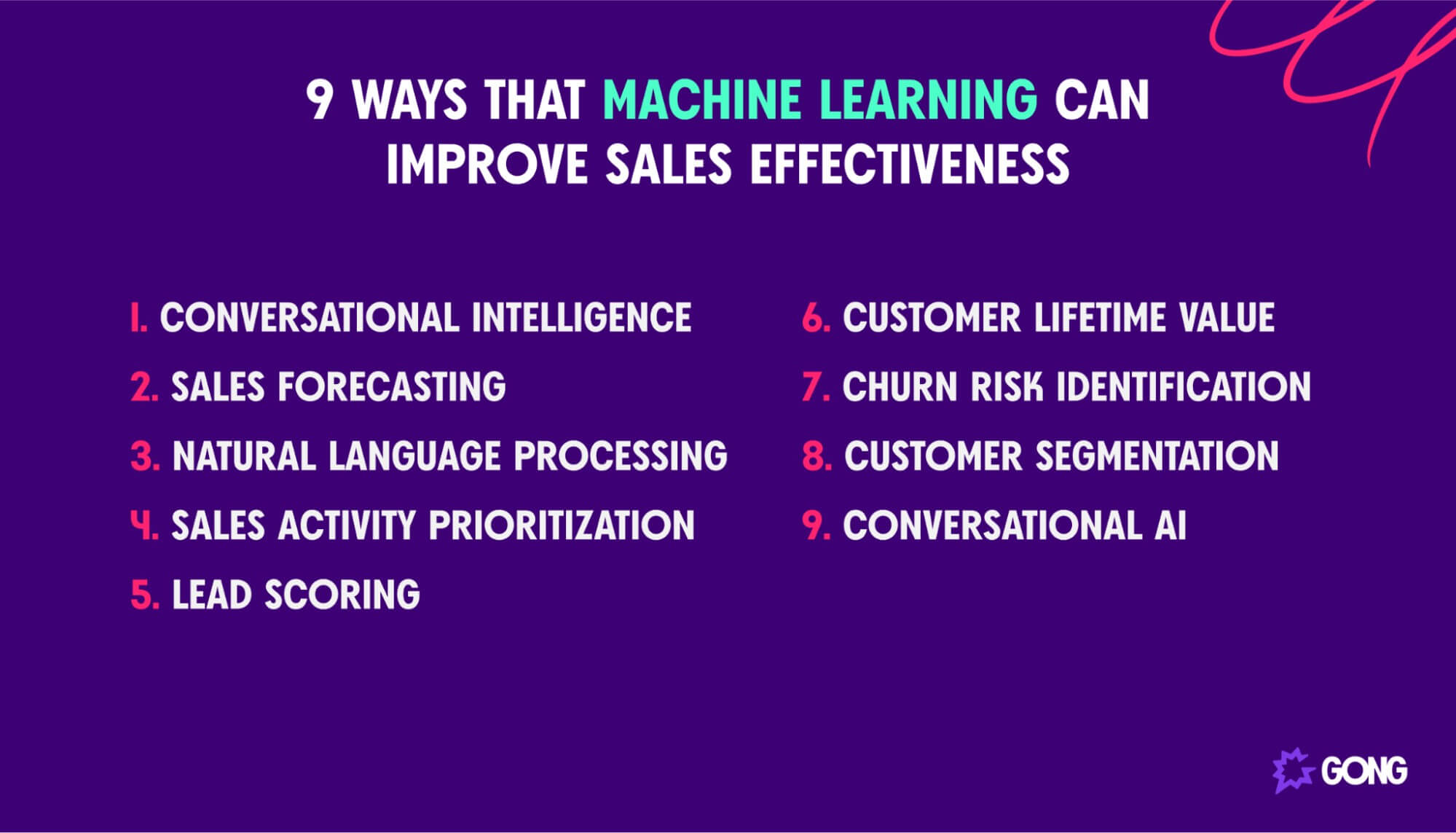
Let’s take a look at these in more detail.
1. Conversation intelligence
Conversation intelligence helps sales managers identify the techniques, word tracks, and tactics that separate high performers from the rest. Then, you can use these valuable insights to build and implement a winning playbook.
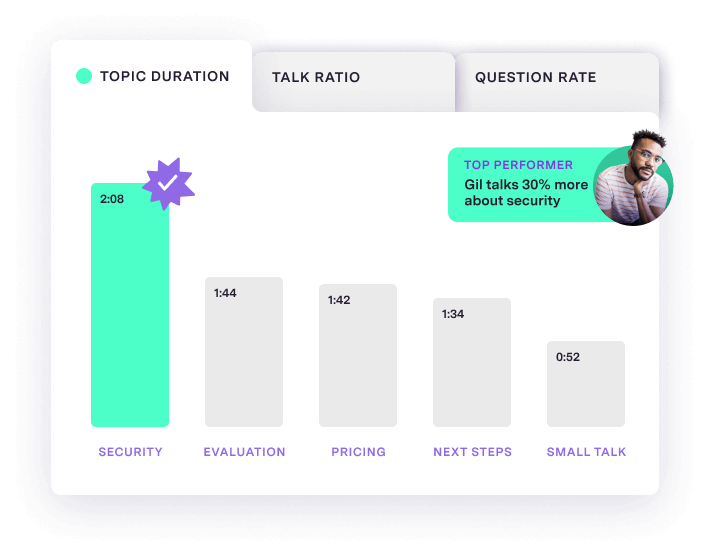
For example, your conversation intelligence tool might identify two factors that distinguish your top performer from the rest of your team:
- Talk ratio. Your top performer talks 40% of the time, while others spend closer to 55% of their conversations talking.
- Topic duration. Your top performer spends twice as long talking about automation capabilities than others.
You can then use this information to conduct more meaningful coaching sessions, focusing on your reps’ automation knowledge and ability to ask open-ended questions that shift the talk ratio.
2. Sales forecasting
Sales forecasting is often a bone of contention among sales teams, particularly when it comes to choosing an appropriate model for making estimates.
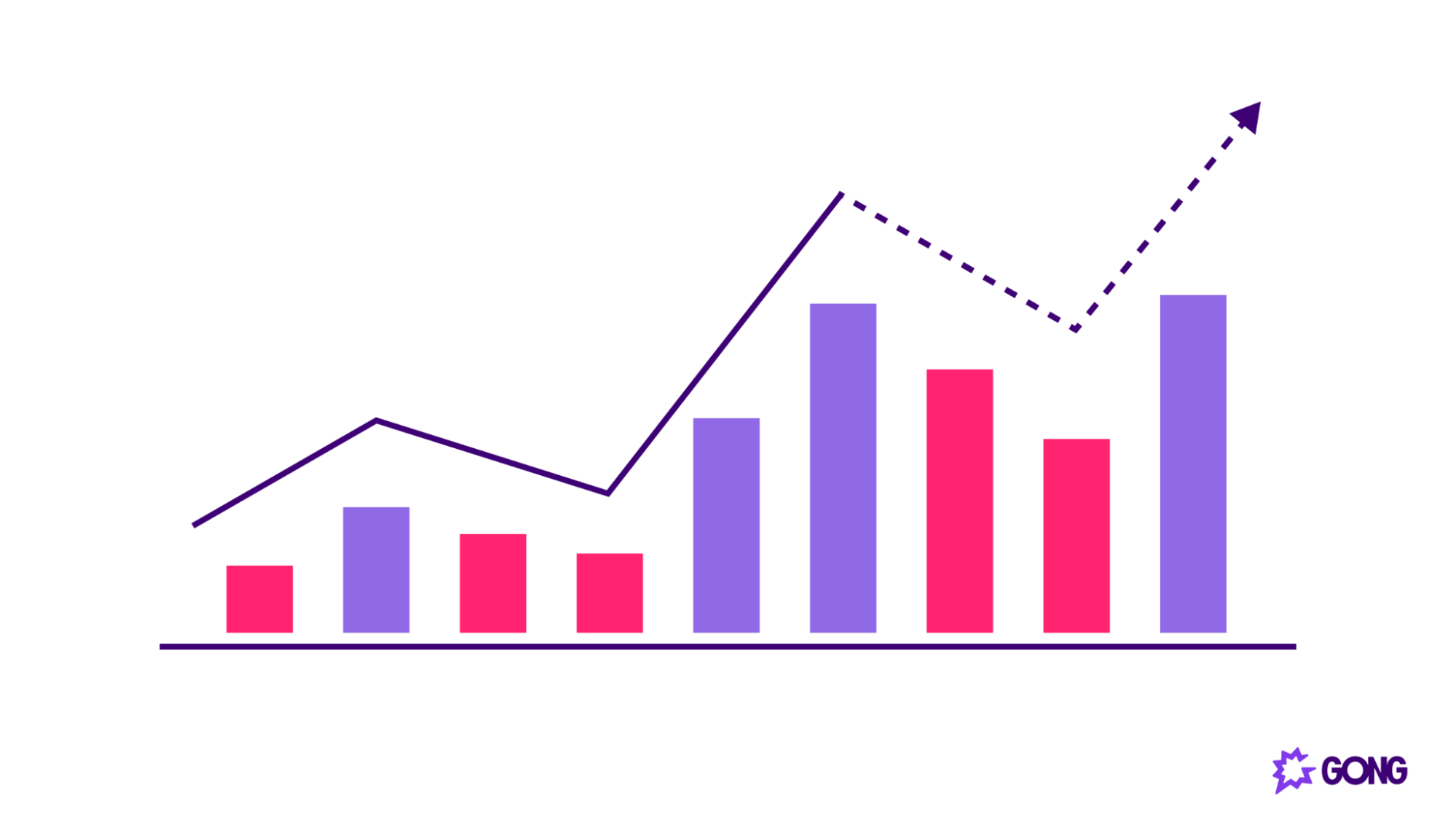
Forecasting often relies on subjective opinions of what we think will happen. Though historical data can help us gain some objectivity, past performance doesn’t always indicate future results.
This is where machine learning sales forecasting can help.
With machine learning, you can improve the accuracy of your sales forecasts by analyzing all of the variables that exist, including:
- Sentiment in prospect communications
- Red flags (like when a deal is in the final pipeline stage, but pricing hasn’t been discussed)
- Pipeline stage conversion rates
Machine learning feeds these forecasts back into itself and compares projections with actual numbers.
3. Natural language processing (NLP)
Natural language processing (NLP) analyzes speech and text by artificial intelligence. It helps sales managers to understand customer intent and sentiment and provides recommendations for actions.
Say you receive a response from a buyer to one of your sales emails. Your AI system analyzes the content of the email and can tell you whether you should:
- Respond with a calendar invite to set up a sales demo.
- Immediately follow up with a phone call.
- Put the prospect into an email lead nurturing campaign.
The more your system analyzes buyer communications, the more accurate predictions you can make about how to communicate with buyers.
4. Sales activity prioritization
Your machine learning system can help you prioritize sales activities and determine the best path forward.
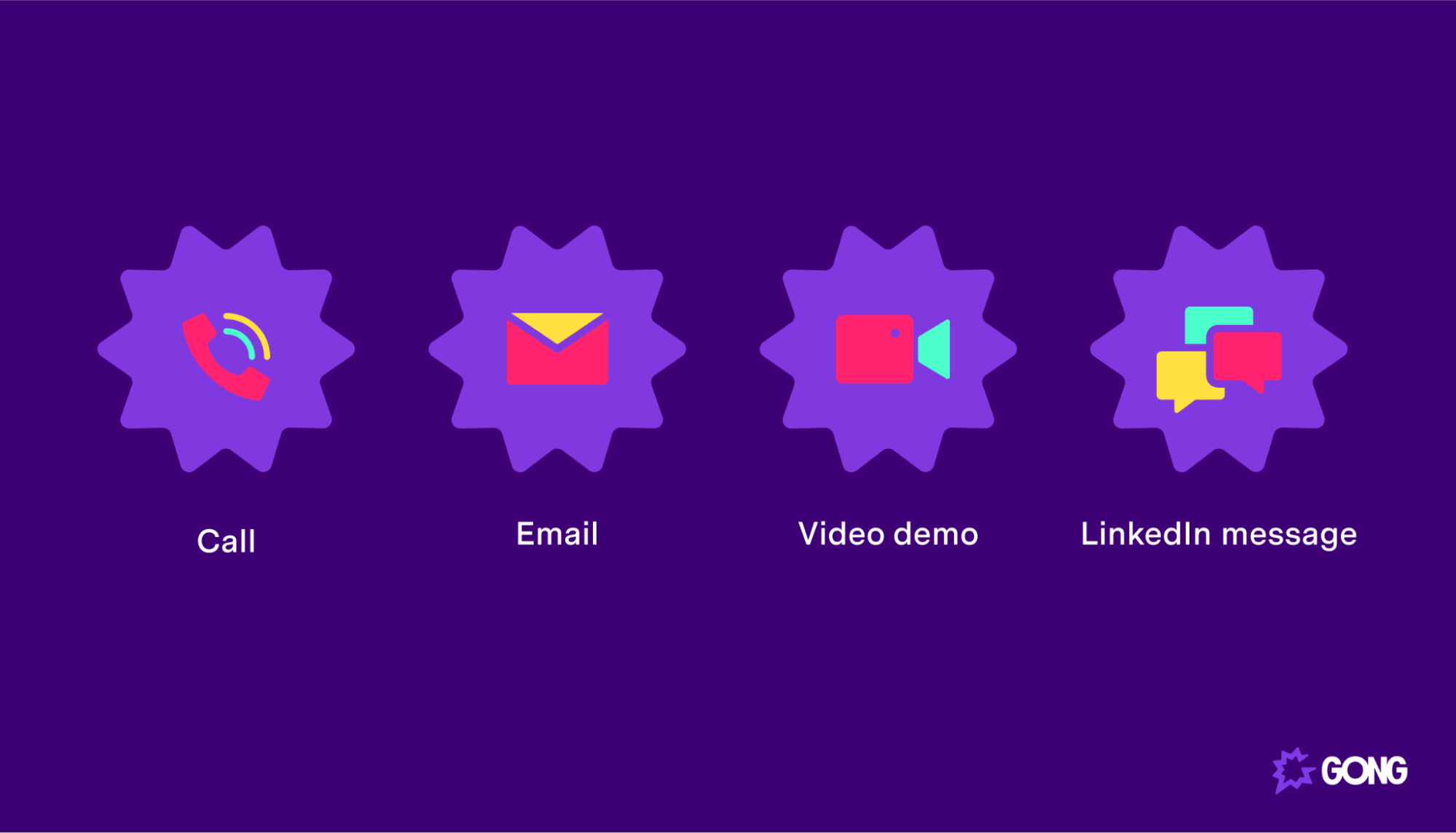
For instance, it can help you understand when to suggest a sales demo or if you should hold off. The system knows this by analyzing customer sentiment in sales conversations (that’s the NLP part) and studying data from your previous sales interactions to determine what factors lead to a successful sales demo.
Other examples of AI-driven sales activity prioritization include recommending that you:
- Send a specific kind of sales collateral (like a whitepaper)
- Follow up on a past call
- Reach out to a more senior decision maker
- Take an opportunity out of your sales forecast
5. Lead scoring
Lead scoring is a powerful directive on its own. It helps reps prioritize leads, maximize the effectiveness of their sales conversations, and route not-yet-sales-ready prospects to automated lead nurturing campaigns.
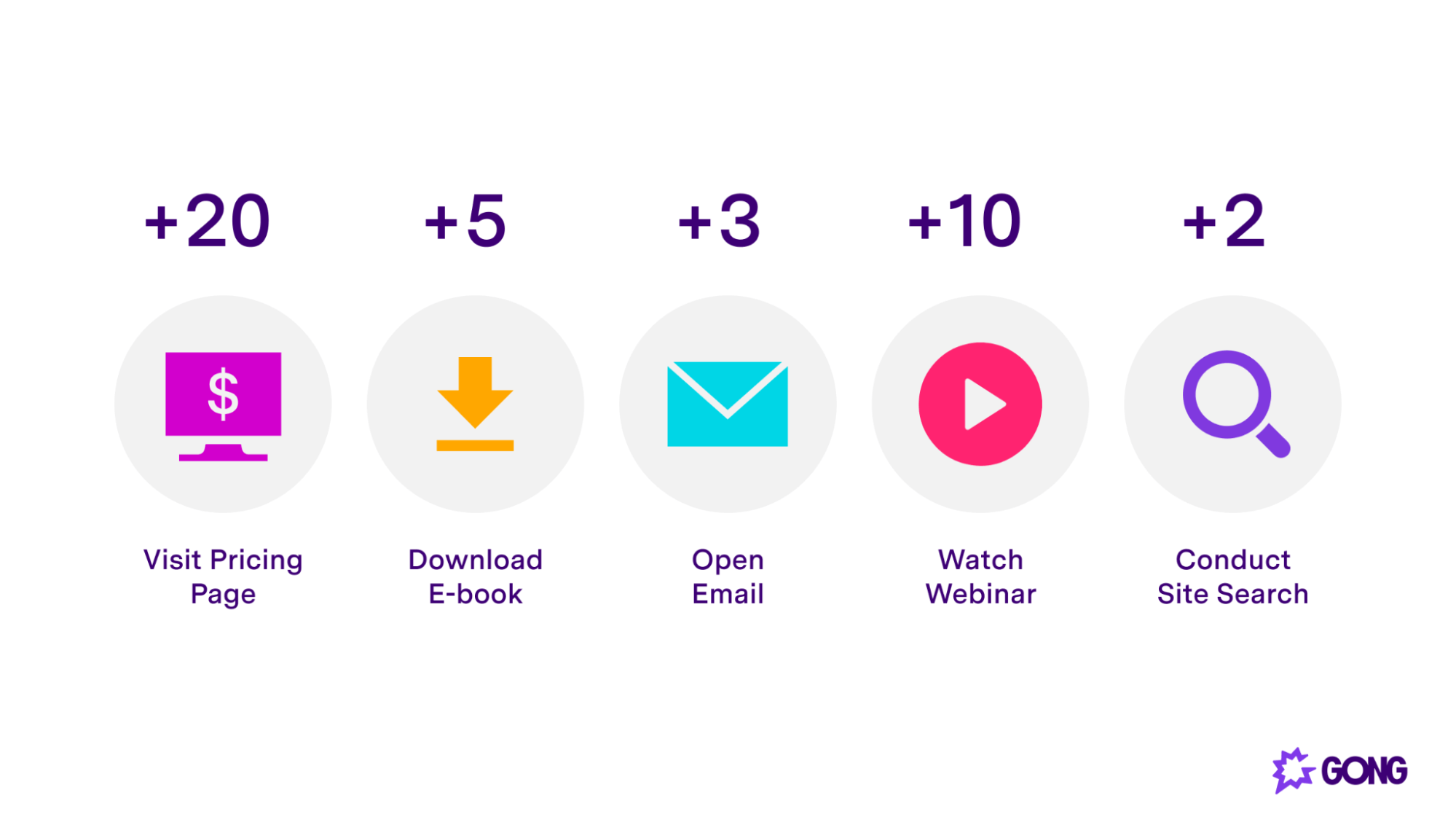
The problem is many lead-scoring initiatives are based on intuition.
We might assign five points to a lead for downloading an ebook and 10 points for watching a webinar. But what if that webinar is twice as influential as the ebook in terms of bringing a prospect to a sales-ready state?
Machine learning helps improve the effectiveness of your lead-scoring process before the opportunity creation phase. It identifies buyer actions that signal qualification and continuously adjusts its algorithms as it learns from the impact of its suggestions.
Consider a simple example. Last week you presented two proposals, one on Tuesday and one on Thursday.
Common sense (and typical sales processes) would dictate that you follow up on the Tuesday prospect first. But your machine learning lead scoring system finds that the Thursday prospect has viewed the proposal five times, while the Tuesday prospect has only seen it once.
In this case, the Thursday prospect has more urgency, and your AI system will recommend that this sales activity take priority.
AI-powered lead scoring can also provide recommendations for lead handling during the deal cycle — for instance how to follow up after an objection was brought up in last call.
6. Customer lifetime value (LTV) modeling
An accurate customer lifetime value (LTV) is critical for:
- Setting appropriate CACs (customer acquisition costs)
- Calculating your ROI on marketing activities
- Demonstrating growth potential when applying for funding
Machine learning improves the precision of your LTV modeling by constantly analyzing factors such as:
- Average contract length
- Upsell potential based on NLP analysis
- Churn rates and risk
- Likely account growth (e.g., adding more seats)
As a result, you can make informed decisions about your sales process.
7. Churn risk identification
Reducing churn is a critical concern for subscription-based and SaaS businesses. If you’re closing 100 new deals each month but your churn rate is just as high, you’re just spending time filling a leaky bucket.
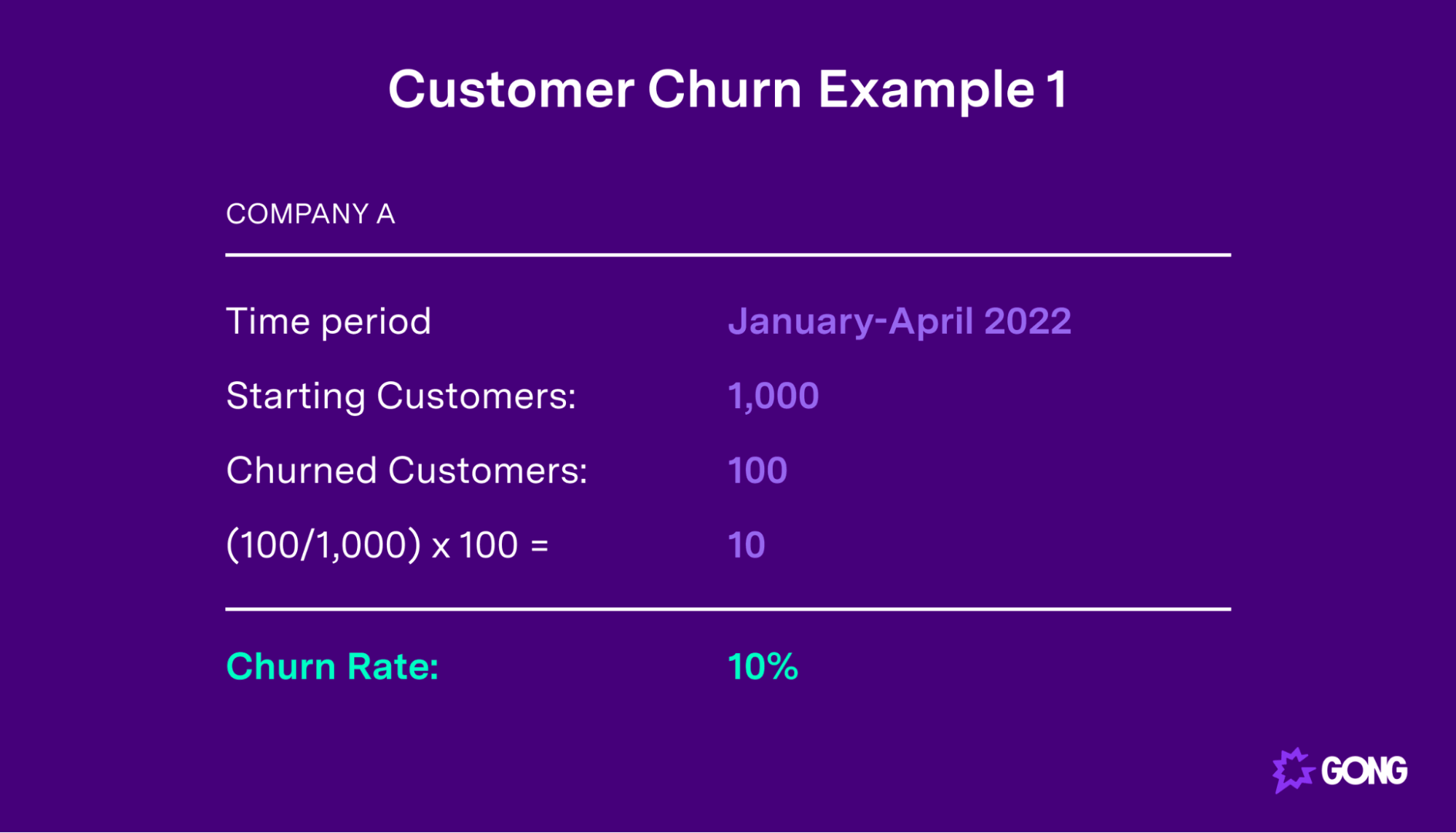
Identifying what leads to churn is vital so customer success teams can jump in early and salvage the relationship.
We can catch potential churn early with signals like:
- Client champions leaving the account
- Buyers avoiding renewal conversations
- Declines in NPS scores
Machine learning analyzes these signals and actions that past buyers have taken before churning to help you understand what creates a churn risk. When the signs crop up, the system will throw up early-warning notifications so you can stay ahead of the curve and mitigate the risk of churn.
8. Customer segmentation
AI and machine learning use complex algorithms like K-means clustering to identify patterns in customer data across factors like demographics, interests, and intent. With this information, you can develop more accurate and detailed customer segmentation.

Without AI, we can easily segment by single factors like age and location. But more subjective identifiers, like purchase intent, are a little more elusive.
Using machine learning, sales teams can more readily segment prospects. As a result, you can provide relevant experiences that improve the buyer experience and enhance the likelihood of closing.
9. Conversational AI
Conversational AI usually comes in the form of an advanced chatbot. The system creates automated conversations with new prospects and routes qualified leads to sales reps using intent filtering.
Overall, it speeds up the qualification and needs assessment process.
Here’s an example from Drift, a platform that offers AI-powered chatbots. Their chatbot captures important lead data in a conversational way (that is, doing away with lead forms).
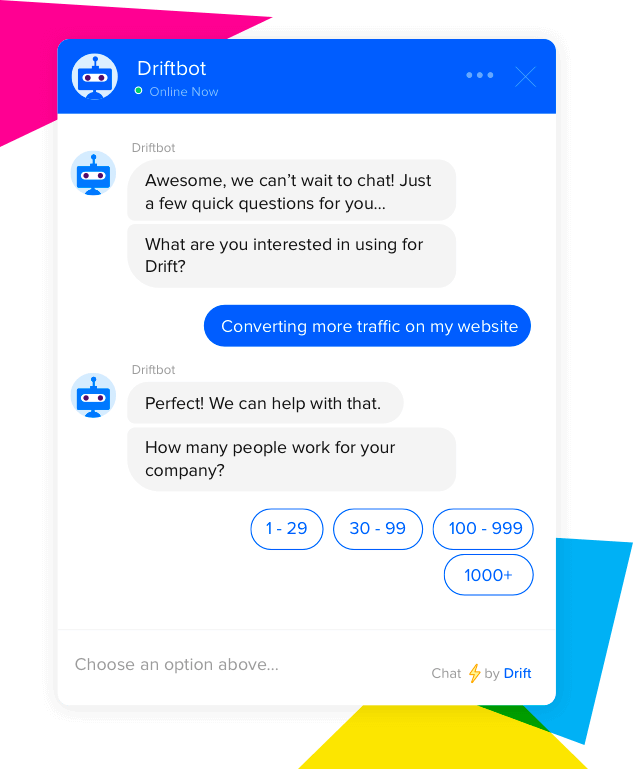
With this information, the chatbot can route sales prospects to the right sales rep using a deal size-based lead routing rule. It speeds up the sales process and ensures the customer gets a smooth and efficient experience.
Power up your sales machine with Gong
We’re proud to say we’re at the forefront of incorporating AI and machine learning to drive sales conversations and boost revenue attainment.
We’ve been nailing AI in driving sales and analyzing sales conversations since before it was cool, and the launch of our unprecedented Revenue Intelligence category has moved the bar for sales performance even higher.
Gong can help you analyze all buyer communications (not just calls), identify what separates high-performers from the pack, and provide action-ready recommendations for sales activities.
Think you’ve got what it takes as a boundary-pushing revenue team? Take our Revenue Intelligence Maturity Assessment and put your team to the test.